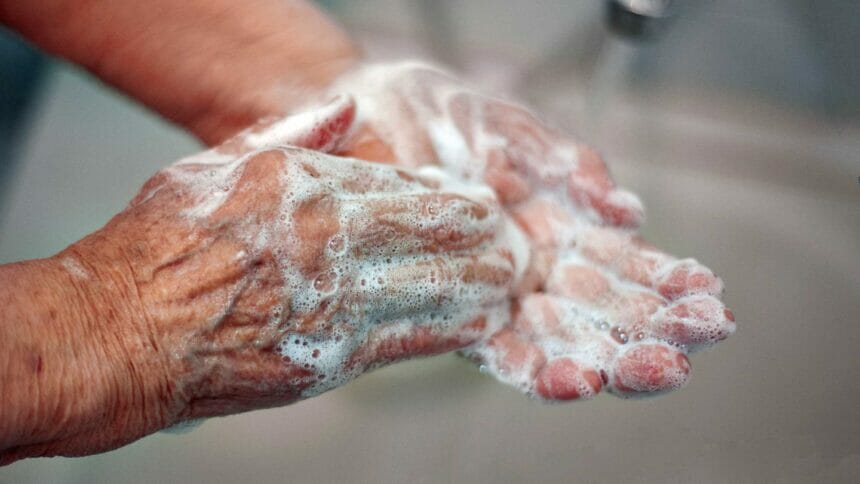
Skin has taken a veritable beating during the global pandemic.
Long hours of personal protective equipment use have taken a toll. The litany includes compression pressure injuries from respiratory gear; folliculitis from colonized bacteria after long periods of sweat and oil secretions from tight-fitting headgear; and impregnation, eczema, sweat herpes, fungal reproduction and tinea in hands and feet.
“Skin’s microclimate has become a focus of discussion for care providers,” noted Amin Setoodeh, senior vice president of skin health and clinical services for Medline.
Joe Kramer, the vice president of sales at Geri-Care Pharmaceuticals, advised skipping makeup or foundation and exfoliating to cleanse pores.
Meanwhile, Massachusetts General Hospital researchers tipped healthcare workers to an inflammatory condition causing body rashes and frostbite-like patches on hands and toes as a potential COVID-19 infection warning sign. The condition, dubbed “COVID toes,” is not believed to be serious.
“This skin issue can develop early on, or later in the disease process,” said Ellen Thompson, director of clinical services at Gentell, a wound care company.
Ironically, one of the more controversial skin issues involves the time-honored practice of handwashing. This, Wound Source editors said, posed “a clinical risk for vulnerable and older persons, as well as individuals with existing skin conditions,” including lesions and tears increasing the risk of viral transmission by indirect contact.
Some clinicians, however, find the claims dubious. “Excess handwashing can decrease the amount of good skin flora,”said Fae Smith, advanced wound care specialist for Essity. “However, if good skin flora took care of COVID-19, then we would not be in this situation.”
Added Mary Madison, RN, RAC-CT, CDP, a clinical consultant-LTC/Senior Living for Briggs Healthcare: “We’re still learning about how the coronavirus spreads beyond droplet and airborne. There is some credence to contact spread, but scientists are still closely looking at that for more specifics.”
From the July/August 2020 Issue of McKnight's Long-Term Care News




